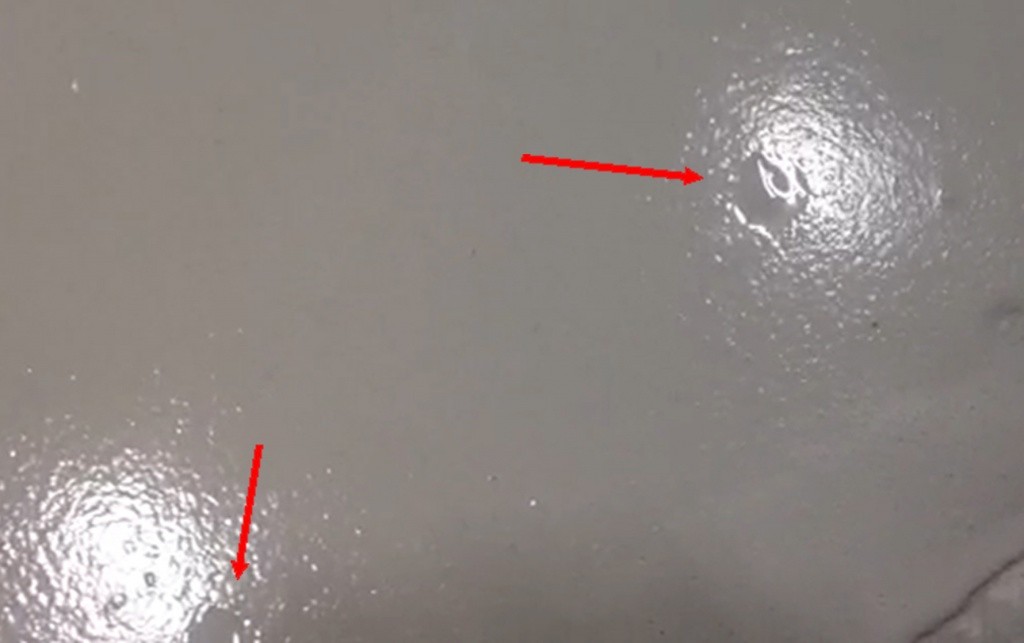There are a few mistakes contractors and do-it-yourselfers can make when installing an epoxy floor coating that can cause issues that could have easily been avoided. Occasionally these simple mistakes can cause bubbles and bumps in the floor as well as a sticky or gummy floor.
Bubbles and Craters
Most bubbles that can be seen in an epoxy floor coating are caused by moisture vapor. Concrete is filled with moisture from the earth that can be driven up through the concrete substrate. After the moisture vapor passes through the concrete, it begins pressing against the epoxy coating. While the coating is still wet, the vapor can push right through the film and escape into the air. However, once the epoxy coating starts to cure and build viscosity, the moisture vapor does not have enough drive to push completely through the coating and gets trapped in the form of a bubble between the substrate and the coating. The epoxy cures and the film of the bubble hardens. Often, if someone were to pop the bubble the next day, they would be able to see some moisture underneath.
Sometimes the vapor has just enough energy to make the epoxy bubble film pop, but the epoxy has already started curing and building viscosity. The epoxy never flows and levels, leaving behind a crater.
Preventative measures can be taken to avoid these issues. A calcium chloride test will provide the contractor with data in regards to how much moisture vapor is pushing through the concrete. Areas with high moisture vapor drive may require different flooring systems. There are high permeability coating options as well as moisture vapor barrier primers for these situations.
Bumps and Swirl Marks
Inadequate roller covers are the most common causes of a floor with bumps and imperfections. Don’t skimp when buying roller covers. The cheap ones leave a lot of lint in coatings even after contractors use lint removal techniques such as rolling the rollers on the sticky side of masking tape. Along with lint, any rocks or debris left on the floor before coating will also cause a bump to be left behind.
Swirl marks are usually caused by poor diamond grinding techniques. Of course, the thinner the coating is, the more the swirl marks will show. Sometimes when diamond grinding, contractors will leave the grinder in one spot for too long or accidentally lean on the machine, causing the grinder to dig deeper in some spots. This variation in the concrete will show in most thin film epoxy systems. A thin film epoxy coating is not something that will cover and mask unlevel surfaces in concrete. For that, a self leveling epoxy, epoxy mortar, or urethane concrete mortar should be used to smooth out the surface.
A Sticky or Gummy Coating
Improper mixing techniques and ratios can prevent the epoxy from curing correctly. Always refer to the product’s Technical Data Sheet for mixing instructions. A sticky or gummy coating can also be caused by contamination on the floor or in the mix pail. Be sure that the floor is free of any oil, wax, acids, or any other contaminants so that the epoxy can react efficiently and bond to the substrate.
Proper evaluation and preparation of a floor is a crucial first step when installing an epoxy floor. Make sure to consult a professional sales representative before planning an installation to ensure the right system is chosen for your needs. Many risks and flaws can be avoided by doing so.
Are you planning an industrial flooring coatings project? Take our online Flooring Self-Assessment. You might be surprised at what you uncover about your floors.



